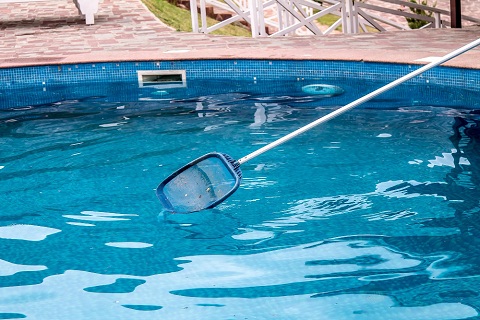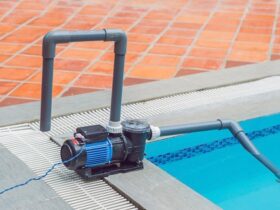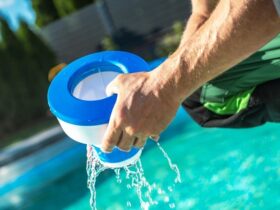Maintaining a clean and algae-free pool is essential for ensuring the health and safety of swimmers while enhancing the overall aesthetic appeal of your pool area. Algae, if not properly managed, can turn your crystal-clear pool into a murky mess, posing potential health risks and damaging pool equipment. This comprehensive guide will walk you through the steps required to effectively vacuum algae out of your pool, ensuring that your pool remains pristine and inviting.
Understanding Algae in Pools
What is Algae?
Algae are microscopic plants that thrive in water environments. In swimming pools, algae can appear as green, yellow, black, or mustard-colored patches, often forming on the walls, floor, and water surface. They proliferate quickly in warm, stagnant water with poor circulation and low chlorine levels.
Types of Algae
- Green Algae: The most common type, appearing as a green tint in the water or as slimy patches on pool surfaces.
- Yellow/Mustard Algae: Less common but more challenging to eradicate, yellow algae appear as mustard-colored spots, typically in shady areas.
- Black Algae: The toughest to remove, black algae have deep roots and form black or blue-green spots on pool surfaces.
Preparation for Vacuuming Algae
Gather Necessary Equipment
Before you start, ensure you have the following equipment:
- Manual Vacuum Head: For targeted cleaning.
- Telescopic Pole: To reach all areas of the pool.
- Vacuum Hose: Long enough to cover the entire pool.
- Pool Brush: For scrubbing surfaces.
- Algaecide: To treat algae growth.
- Shock Treatment: To kill algae.
- Pool Skimmer: To remove debris.
Pre-Vacuuming Steps
- Test and Balance Water Chemistry: Ensure your pool’s pH, alkalinity, and chlorine levels are balanced. Ideal pH levels are between 7.2 and 7.6.
- Shock the Pool: Use a chlorine shock treatment to kill the algae. Follow the manufacturer’s instructions for dosage.
- Brush the Pool: Thoroughly brush the walls, floor, and any algae-infested areas to loosen algae and make it easier to vacuum.
- Run the Filter: Operate the pool filter for 24 hours after shocking to help remove dead algae.
Vacuuming Algae from Your Pool
Manual Vacuuming
- Assemble the Vacuum: Attach the vacuum head to the telescopic pole and connect the vacuum hose.
- Prime the Hose: Submerge the hose in the pool to fill it with water, removing air pockets.
- Connect to Skimmer: Insert the hose into the skimmer suction port. Ensure the pump is set to the waste setting to bypass the filter and prevent clogging.
- Start Vacuuming: Slowly move the vacuum head across the pool surface in overlapping strokes. Avoid stirring up algae to prevent it from resettling.
Using an Automatic Pool Cleaner
- Set Up the Cleaner: Follow the manufacturer’s instructions to set up the cleaner.
- Deploy the Cleaner: Place the cleaner in the pool and let it run for the recommended duration, usually several hours.
- Monitor Progress: Check periodically to ensure the cleaner is functioning correctly and removing algae effectively.
Post-Vacuuming Maintenance
Filter Cleaning
- Backwash the Filter: If you have a sand or DE filter, backwash it to remove trapped algae and debris.
- Clean Cartridge Filter: Remove and rinse cartridge filters thoroughly with a hose.
- Replace Filter Media: If the filter media is heavily contaminated, consider replacing it.
Chemical Treatment
- Rebalance Water Chemistry: Test and adjust pH, alkalinity, and chlorine levels.
- Add Algaecide: Use a pool-safe algaecide to prevent future algae growth.
Regular Maintenance
- Daily Skimming: Remove debris and leaves with a pool skimmer.
- Weekly Brushing: Brush the walls and floor to prevent algae buildup.
- Maintain Proper Circulation: Ensure the pool pump runs for at least 8-12 hours daily to maintain water circulation.
Preventing Algae Growth

Consistent Chlorination
Maintain a consistent chlorine level between 1-3 ppm to inhibit algae growth. Use a chlorine stabilizer to protect chlorine from UV degradation.
Proper Filtration
Ensure your pool filter operates efficiently. Regularly clean and backwash your filter to maintain optimal performance.
Adequate Circulation
Proper water circulation is crucial. Ensure your pool pump is correctly sized and runs for an adequate duration daily.
Routine Pool Maintenance
- Regular Water Testing: Test water chemistry weekly and adjust as needed.
- Brushing and Skimming: Keep the pool surfaces clean and free from debris.
- Shock Treatments: Periodically shock your pool to eliminate contaminants.
Algaecide Usage
Incorporate a maintenance algaecide program, especially during warm weather or when the pool is heavily used.
Conclusion
Effective algae management requires a combination of proper pool maintenance, regular chemical treatments, and vigilant cleaning practices. By following the steps outlined in this guide, you can ensure your pool remains algae-free and inviting. Consistent effort and attention to detail will not only enhance the visual appeal of your pool but also ensure a safe and enjoyable swimming environment for all.










Find Us on Socials